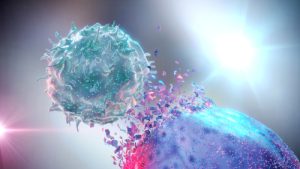
The Immune System
(Notes by Ptaah in blue text)
The body of the human being as well as of all life-forms is constantly exposed to attacks from environmental influences, parasites, bacteria, viruses, fungi, microbes and toxins, etc., which lurk everywhere. Without the body’s own defense system, the majority of all life-forms would be defenceless against the attacks of these disease influencers. The immune system acts defensively against the attackers and prevents infections, normally rejecting the pathogens that could enter the body from the outside and make it sick.
The body’s immune system is mainly distributed among the cells and organs, each of which has specific tasks in the complex system and the defense against pathogens. The following can be mentioned:
- The mucous membranes are mainly endangered by the penetration of pathogens, i.e. the causes of infections, but also the throat, the nose and the intestines, and ultimately also the skin.
The moist, inner lining of some organs and body cavities (such as the nose, mouth, intestines, have glands in the mucous membrane make mucus, a thick, slippery fluid.
In general, the functions of mucous membranes are to protect the body from being infected by viruses and bacteria and to keep the tissues of the body adequately moisturized.
Your skin and mucous membranes are the first line of defense against germs entering from outside the body. They act as a physical barrier with support from the following:
- Antibacterial substancescan kill germs right from the start. A certain enzyme found in saliva, the airways and tear fluid destroys the cell walls of bacteria.
- Mucus in the bronchi helps trap many of the germs we breathe in so they can be moved out of the airways by hair-like structures called cilia.
- Stomach acid stops most of the germs that enter the body in the food we eat.
- Harmless bacteria on our skin and many of the mucous membranes in our body also act as part of the immune system.
- The organ spleen has to fulfil functions of immune defense, namely with regard to the multiplication of white blood cells, the so-called lymphocytes, whereby overaged red blood cells are also secreted via the spleen. But it also stores defense cells, which are then supplied to the body when an immune defense is necessary.
Spleen
The spleen is located in the left upper abdomen, beneath the diaphragm, and is responsible for different kinds of jobs:
- It stores various immune system cells. When needed, they move through the blood to other organs. Scavenger cells (phagocytes) in the spleen act as a filter for germs that get into the bloodstream.
- It breaks down red blood cells (erythrocytes).
- It stores and breaks down platelets (thrombocytes), which are responsible for the clotting of blood, among other things.
- A few defense cells are also produced as precursors in the bone marrow.
Bone marrow is thought to be a primary hematopoietic organ, where blood cells are produced. However, accumulated evidences demonstrate that active function and trafficking of immune cells, including regulatory T cells, conventional T cells, B cells, natural killer T (NKT) cells, neutrophils, and mesenchymal stem cells, are observed in the bone marrow. Bone marrow is an immune regulatory organ capable of fine-tuning immunity.
- Then the tonsils also have an initial defense function against externally invading pathogens.
The tonsils are also part of the immune system. Because of their location at the throat and palate, they can stop germs entering the body through the mouth or the nose. The tonsils also contain a lot of white blood cells, which are responsible for killing germs. There are different types of tonsils: palatine tonsils, adenoids and the lingual tonsil. All of these tonsillar structures together are sometimes called Waldeyer’s ring since they form a ring around the opening to the throat from the mouth and nose.
There is also lymphatic tissue on the side of the throat, which can perform the functions of the palatine tonsils if they are removed. [01]
5.The lymph nodes and lymph node tracts simultaneously form a collection point for defense cells and antibodies.
Lymph nodes are small bean-shaped tissues found along the lymphatic vessels. The lymph nodes act as filters. Various immune system cells trap germs in the lymph nodes and activate the creation of special antibodies in the blood. Swollen or painful lymph nodes are a sign that the immune system is active, for example to fight an infection.
- Above the heart is the primary lymphatic organ, the thymus, or glandular tissue, which, as part of the lymphatic system, stores the mature defense cells or T-cells.
The Thymus is located behind the breastbone above the heart. This gland-like organ reaches full maturity only in children, and is then slowly transformed to fatty tissue. Special types of immune system cells called thymus cell lymphocytes (T cells) mature in the thymus. Among other tasks, these cells coordinate the processes of the innate and adaptive immune systems. T cells move through the body and constantly monitor the surfaces of all cells for changes.[01]